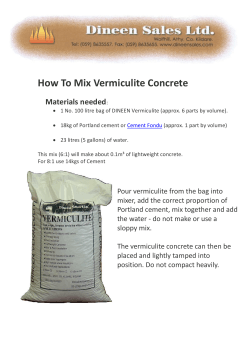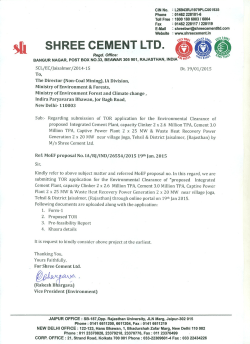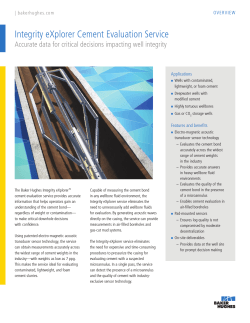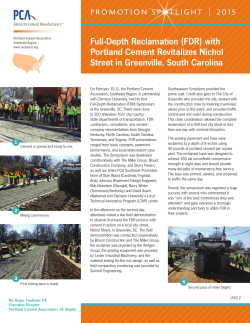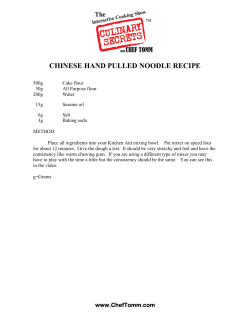
Document 195380
cot HOW TO USE ANCHOPING AND PATCHING CAUTION — Contains ingredients which can cause irritation of the skin or eyes May develop sufficient heat to cause burns d a large mass such as a cast of a hand or arm is kept in contact with skin while hardening Product hardens when wetted, and if ingested may result in obstruction Do not take internally If this happens. CALL PHYSICIAN IMMEDIATELY In case of contact with eyes. flood eyes immediately and repeatedly with water Remove from skin by washing thoroughly If irritation continues. see physician KEEP OUT OF THE REACH OF CHILDREN Do not allow children to use except when under adult supervision When mixing or working in a dusty atmosphere. use respirator approved by Bureau of Mines or equivalent DIRECTIONS HOW TO MIX THE CEMENT Always use a clean container. Never add sand, gravel or other foreign substances to ROCKITE. They weaken the cement and affect setting . MIX NO MORE CEMENT THAN YOU CAN USE IN 10 MINUTES . ROCKITE may be used in either fluid consistency for pouring, or plastic consistency for application with putty knife. spatula or cement trowel. Either consistency produces the same high strength Fluid (Pouring) Consistency: Mix ROCKITE with water to a THICK PASTE. Let this mixture stand for about one minute. Then stir thoroughly. At this point, the mixture will become more fluid. The proper consistency is like heavy batter • just fluid enough to pour, but NOT WATERY. Keep the mix thick. This makes stronger cement. Add water VERY SPARINGLY. It the mix is thin, add more ROCKITE promptly to thicken it. If you wish to measure, the correct water addition is 4 oz. per lb. or 1 '4 pints for 5 lbs. When using this method, MEASURE ACCURATELY. How to Anchor Bolts, Posts and Rods in Concrete, Brick or Stone 1. Drill the hole (never less than 2" deep). BLOW OUT ALL DUST AND LOOSE PARTICLES. If air line is not available, tire pump, battery filler or bulb syringe is handy for this purpose. 2 Fill the hole with water. Scrub the sides and bottom with a stiff cir• cular brush such os a bottle brush. 'THIS IS IMPORTANT. 3 Remove excess water with rag or other absorbent material. LEAVE THE HOLE CLEAN AND UNIFORMLY DAMP. 4 Mix the ROCKITE in a CLEAN CONTAINER. (See "How to Mix the Cement.") • 5. For onchoring machinery in concrete, use the fluid consistency (see above.) Provide WASHERS on anchor bolts before placing them in the opening. Pour the cement into the space around the bolt. 6. for exterior anchoring of ornamental iron, pour fluid ROCKITE (see above) around the rod, tapping the rod to settle the ROCKITE. Fell the hole so that it can be tapered up the side of the rod. 7. For anchoring in vertical walls, use the plastic consistency (see above) Fill the hole with the plastic cement first. Then tamp the bolt or rod into place. If the cement becomes too fluid because of the tamping process and sags out of place, let it stand for a few moment, and it will stiffen. Then smooth out the surface around the bolt with a putty knife or spatula. 8. Let the cement harden for at least 30 minutes. For heavy egO pment, allow one hour. NOTE DO NOT USE ROCKITE IN SWIMMING POOLS When used outdoors, ROCKITE should be allowed to dry out thoroughly for seven days and then protected with a coat of good grade exterior paint. ROCKITE should not be used underwater or as a primary structural member. ROCKITE should not be used outdoors for anchoring in porous materials, such as brick, limestone and granite, when they are exposed to wet conditions. 4 Due To the Expansion property of ROCKITE do not use ROCKITE for anchoring in concrete that is narrow on top such as handicapped ramps, concrete construction barriers, or concrete walls. When using ROCKITE always leave at least 4 inches from the edge of the concrete to the hole. Plastic Consistency: Add only enough water to make the cement form dry lumps. Keep mixing for 1 to 11/2 minutes. (Small quantities can be kneaded in the hands.) As the powder absorbs the moisture, the cement will begin to look like ordinary putty. This is the proper consistency. If you wish to measure, the correct water addition for the plastic consistency is 3 oz. per lb. When using this method, MEASURE ACCURATELY. How to Patch Holes and Cracks in Concrete Floors or Masonry Walls NOTE: For dependable performance, ROCKITE should always be installed no less than 1/2 inch thick. Thin sections or "feather-edges" are not recommended. 1. Crocks should be raked out to remove any debris or loose particles. If a hole is to be repaired, chisel down the edges to provide a "form" for the cement when it is poured. 2. If the hole is clean, simply remove chips and loose dirt. (Blowing or vacuum cleaning does a better job than sweeping.) If hole is greasy or oily, scrape off oll accumulation and hack the surface with a hammer and chisel down to firm, clean concrete. 3. Sprinkle the hole with water. Sweep out all puddles. Leave the surface 4. Mix the ROCKITE in a CLEAN CONTAINER. For floor surfaces, use the damp but not wet. fluid consistency. For wall work, use the plastic consistency. (See "How to Mix the Cement.") 5. Pour a little cement into the hole and scrub it into the surface with a stiff brush or broom to drive the cement into the pores. This helps the patch to adhere. Then add enough cement to match the level of the surrounding surface. 6. When the cement begins to thicken (about 10 minutes), smooth out any imperfections in the surface with a spatula or cement trowel. 7. After 30 minutes, sprinkle the patch with water. Foot traffic and light trucking may be resumed immediately. For heavy trucking, allow one hour before resuming traffic. FREEZING TEMP. APPLICATION Freezing Temperatures: The procedure described in the foregoing may be used safely at ternperaturk..5 down to 25° F. If temperature is below 25°, keep the ROCKITE in a war.-n place before using. When ready to apply, mix the ROCKITE with warm water and keep the mixture in a warm area. As soon as it begins to stiffen slightly (approximately 10 minutes after the water added), pour is the mixture quickly into place as described below. The hardening proce-s then creates heat and protects the ROCKITE from freezing. Do not add anti-freeze compounds to ROCKITE mixtures. 5
© Copyright 2025
